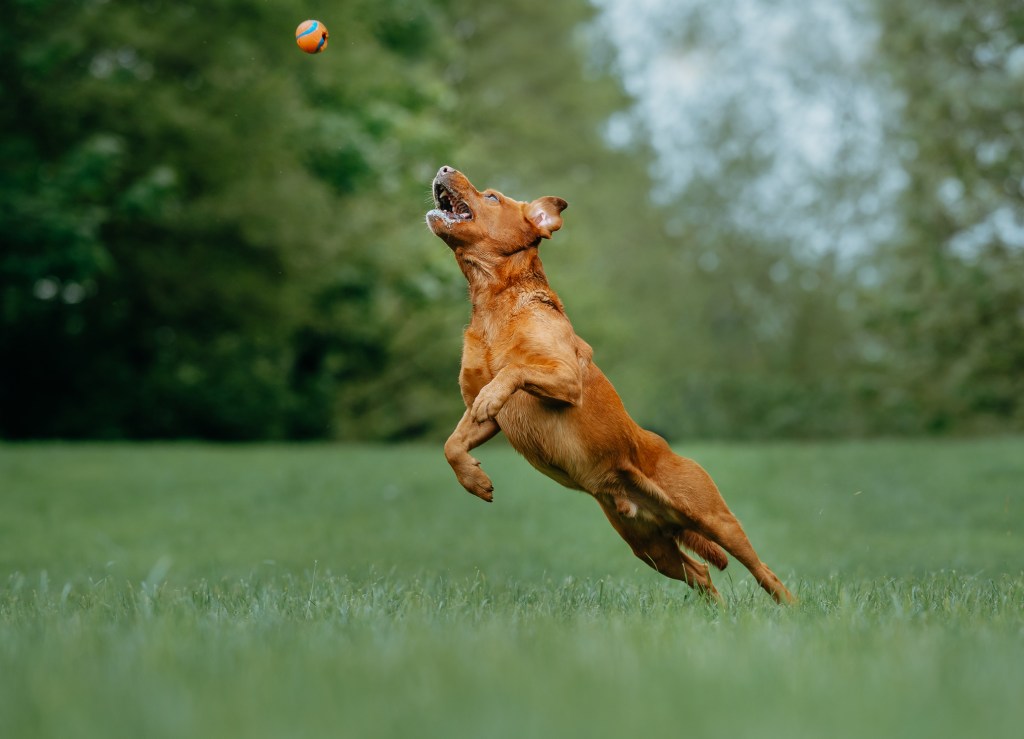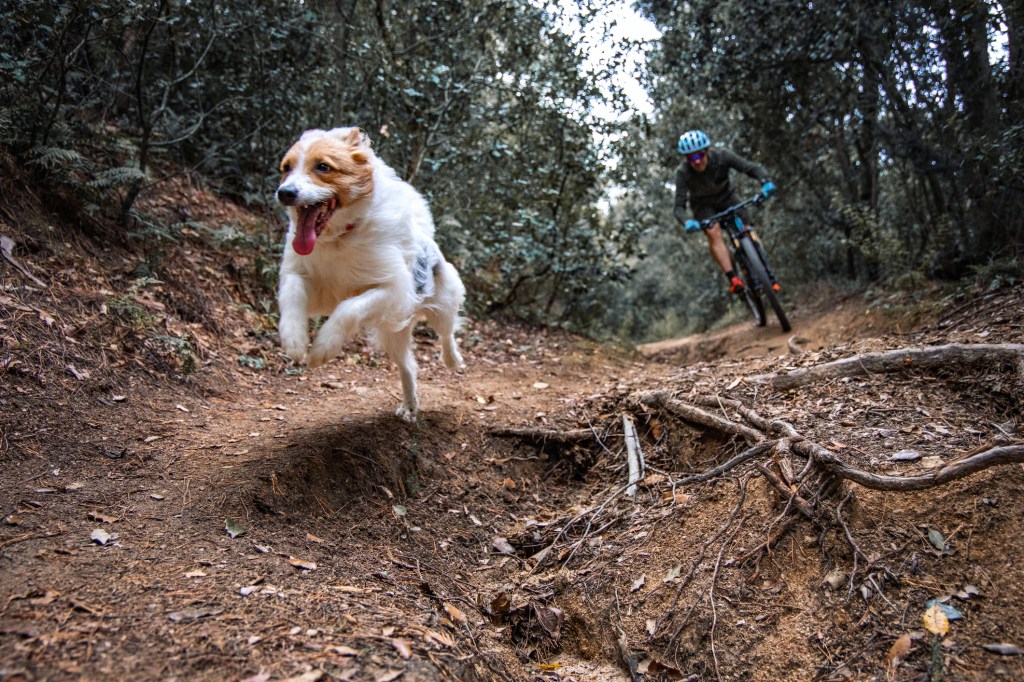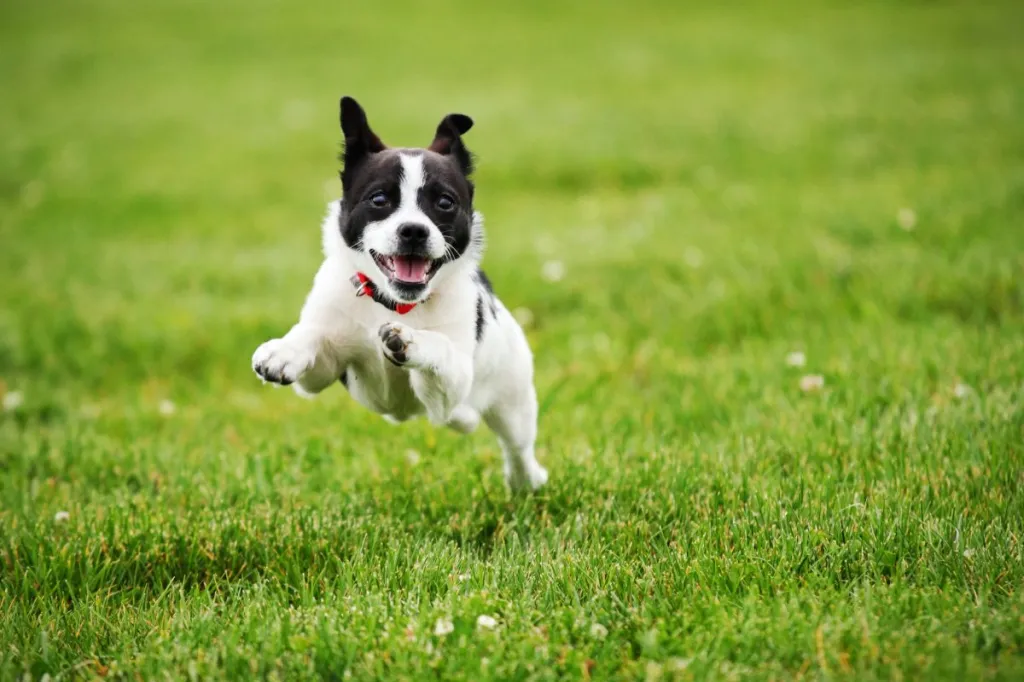We often think of exercise only as a health issue, but it has significant day-to-day effects on a dog’s behavior as well. Dogs — particularly puppies and young dogs — have a lot of energy, and if they don’t get the chance to burn it off, destructive behavior is often the result.
If you’re annoyed at your dog’s digging, have headaches from barking, and need to replace pillows shredded into expensive fluff, your dog is probably not getting enough exercise.
These behavior issues cause many people to give up their dogs, even though they’re completely preventable problems. You know those “free to a good home, dog needs room to run” ads? They’re usually placed by people whose dogs don’t just need room to run; they need exercise they’re not getting.
Unfortunately, some people don’t think enough about exercise when selecting a dog breed, and they choose a dog who needs more than they’re willing or have time to provide.
How much exercise does my dog need?

The amount of exercise that is “enough” depends on your dog’s age, breed, and health.
A 10-month-old Irish Terrier puppy is going to need more exercise than a 5-year-old Whippet. A sighthound needs short bursts of activity while guarding dogs don’t need as much overall as sporting breeds who like to hunt all day.
Even within a breed, exercise needs vary. A highly energetic 8-year-old Golden Retriever could easily need more exercise than a calm 3-year-old Golden. And senior dogs still need to go for walks — just shorter ones than they used to enjoy.
Generally speaking, a leashed walk around the block isn’t going to cut it. Most dogs need 30 to 60 minutes of physical activity a day. Your canine pal needs enough that they’re slowed down by the time you stop.
Some general guidelines for getting your dog enough exercise:
- Active breeds need a minimum of 30 minutes of hard aerobic exercise most days of the week, preferably daily.
- Not all toy or small breeds get enough exercise inside the house, contrary to popular belief. Pugs, for example, are prone to obesity and need much more activity than they usually get.
- It’s not safe to go out in extremely hot or cold weather. During such periods, stay inside and teach tricks to engage your dog’s mind, throw toys, or run up and down the stairs together.
- Good exercise uses both mental and physical muscles. Exploring a new hiking trail, for example, engages your dog’s mind as well as their body.
- Live by the philosophy that a tired dog is a good dog.
Where to get exercise

Like people, most dogs enjoy both familiarity and a little variety in their exercise routines.
- Many dogs get to know the neighborhood during walks and enjoy checking on their favorite spots.
- Dog parks are popular places for off-leash running and romping with other dogs, which is exactly what most dogs need. However, not all dogs can play nicely with others. If your dog doesn’t like other dogs, the dog park is definitely not the place for them.
- Doggy daycare can stimulate both their mind and body. Dogs should come home from daycare worn out and deliciously happy.
The cost of not getting enough exercise
Inactive dogs are often overweight dogs, and, as with humans, that brings plenty of health risks.
Obesity contributes to a dog’s risk of diabetes, respiratory disease, and heart disease. It exacerbates common orthopedic concerns such as hip dysplasia and arthritis. Obesity can stress joints, ligaments, and tendons.
Senior dogs often have a hard enough time getting up without the added problem of lifting excess pounds.
Exercise is an essential part of your dog’s life, and as a loving pet parent, it’s your responsibility to provide opportunities for your pup to get moving!









